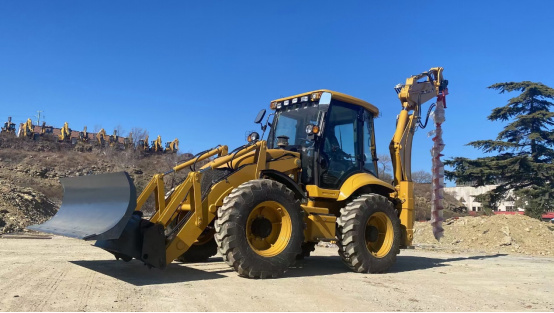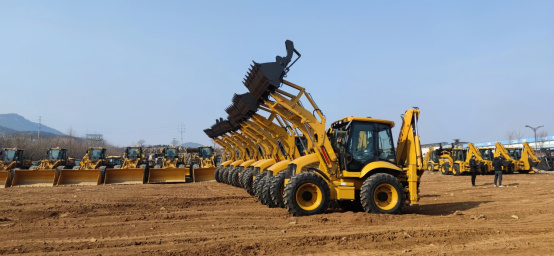Backhoe loaders are commonly known as "busy at both ends". Because it has a unique structure, the front end is a loading device and the rear end is an excavation device. On the jobsite, you can transition from loader to excavator operator with just a turn of the seat. Backhoe loaders are mainly used in urban and rural highway construction and maintenance, cable laying, electric power and airport projects, municipal construction, farmland water conservancy construction, rural residential construction, rock mining, and various construction projects engaged in by various small construction teams. . "Two-end busy" is a kind of small multi-functional construction machinery. It is generally used in small projects after the completion of large projects.

1. Classification of backhoe loaders
Backhoe loaders are commonly known as "busy at both ends" and have two functions: loading and excavation. Backhoe loaders are classified as follows:
1. Structurally
From a structural point of view, there are two forms of backhoe loaders: one with a side shift frame and the other without a side shift frame. The biggest feature of the former is that the excavation working device can be moved sideways to facilitate operations in special sites. Its center of gravity is lower when in the transportation state, which is conducive to loading and transportation. The disadvantages are: due to structural limitations, the outriggers are mostly straight legs, the support points are within the edge of the wheel, the distance between the two support points is small, and the stability of the whole machine is poor during excavation (especially when the excavation working device is moved to one side). The function of this type of backhoe loader focuses on loading, and it is produced more in Europe; the latter's excavation work device cannot be moved sideways, and the entire excavation work device can rotate 180° around the center of the rear part of the frame through the slewing support. The legs are frog-leg-style supports, and the support points can extend to the outside and behind the wheel, which provides good stability when digging and is conducive to improving the digging ability. Since there is no side shift frame, the cost of the entire machine is reduced accordingly. The disadvantage is that the bucket is hung at the rear of the vehicle when the bucket is retracted, and the outer dimensions are long. When the locomotive is in the transportation and loading state, the stability is poor, which has a certain impact on loading and transportation. The function of this model focuses on excavation and is produced in the United States. Mostly.
2. Power distribution
In terms of power distribution, backhoe loaders come in two forms: two-wheel (rear-wheel) drive and four-wheel (all-wheel) drive. The former cannot fully utilize the attached weight, so the adhesion between the locomotive and the ground and the traction force are lower than the latter, but the cost is much lower than the latter.
3. On the chassis
Chassis: Among the three types of chassis commonly used for small multi-functional engineering machinery, the power of mini excavators is mostly below 20kW, the total machine mass is 1000-3000kg, and it uses a crawler traveling mechanism with a walking speed of less than 5km/h. It is mostly used in farms and gardens. and other small-scale earthmoving operations. Due to its small model and high cost, it is currently difficult to popularize in China; the power of the backhoe loader is mostly 30-60kW, the machine weight is relatively large, the mass is about 5000-8000kg, the excavation capacity is strong, and the wheel loader is mostly used. It has a type traveling mechanism, all-wheel drive, and uses a steering drive axle or articulated steering. The vehicle speed is relatively high, reaching more than 20km/h. It is widely used abroad for earthwork operations in farms, infrastructure, road maintenance and other projects and for auxiliary operations at large construction sites. This model has a large appearance and poor flexibility, and is generally difficult to adapt to operations in small spaces.

Post time: Jan-31-2024
